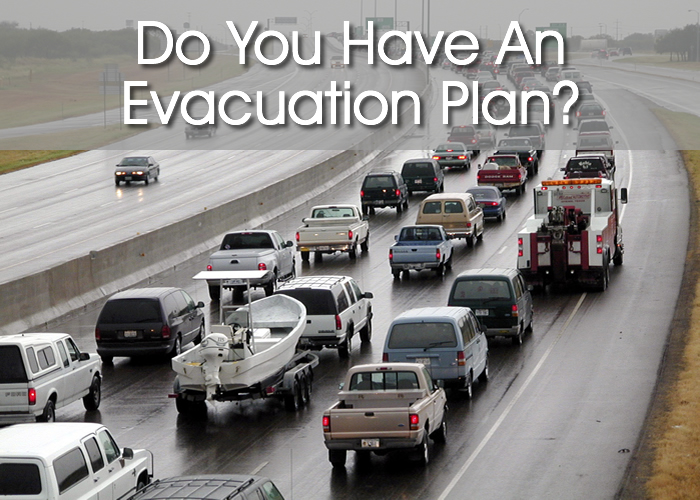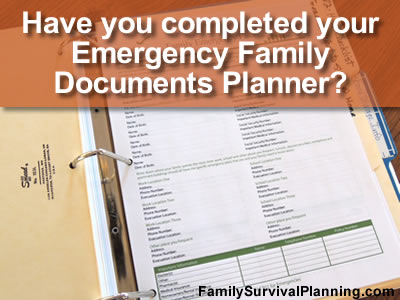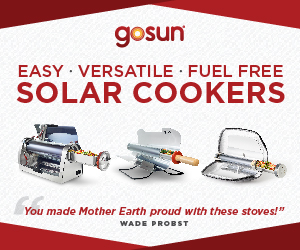- HOME
- Survival Gear
- Emergency Radios
An Emergency Radio
Could Save Your Life
There's a reason emergency rescue workers, FBI agents, police officers and many other people in dangerous jobs use a radio every single day.
Any you probably know what that the reason is - communication, of course! It's so vital in dangerous jobs, places and situations.
We know how important it is to get advance warnings about potential storms, warnings of a crisis that may come quickly, and possibly announcements from government officials about a possible foreign attack (nuclear?), or a possible pandemic, before they affect you!
And that could save your life!
Invest in emergency food storage now and enjoy peace of mind for the next 25 years. Don't miss out on the savings!
Here's an example...
Imagine you live in Florida and you know a hurricane is coming. Panic has set in as people rush to stores to stock up on everything.
As the strong winds come, your electricity goes out. Now would be a good time to know what's going on, right?
If you were smart enough to think ahead, you'd have bought a radio for this exact moment. With your emergency radio, you can practically "predict the future".
Solar/battery operated radios will work when your cell phone won't — not that they do the same thing, but most emergency radios also have cell phone chargers built in.
A solar, battery operated, or wind-up radio will come in handy when you really need to know:
- Whether to evacuate or stay put.
- If you need to evacuate, which roads are open and what is the traffic situation?
- Is the government going to impose martial law?
- Are there disease outbreaks you need to avoid?
- Hear what other preppers in the area are doing so you can team-up.
And so much more!
Affordable, Multi-function Radios
Kaito Pocket Radio
The Kaito Pocket Radio is amazingly feature rich for it's small size! The same size as a credit card (and only 7/8 of an inch thick), this is one of the tiniest radios on the market.
It's featherweight too. Weighing 2.8 oz. without batteries (3.6 oz. with) it weighs a fraction of what other survival radios weigh.
Even though it's small it's still powerful enough to save your life.
Recent advances in technology means advanced radio electronics are packed into this tiny unit.
- With full AM/FM tuning of 530 – 1710 KHz (AM) and 88.1 - 108.1 MHz (FM) valuable information sent your way will be easy to hear.
- Set the alarm feature to remind when to take medication, wake up, or perform urgent survival tasks.
- Amazingly Kaito has also included a 3x telescoping antenna with the radio, meaning no nearby signal's going to be missed.
Though it's incredibly lightweight, it's very durable. Drop it in the dirt, get caught using it in the rain and it will take it and keep on working.
It's not water proof, but it's still going to perform near flawlessly in almost any circumstance. And that's what you need in a survival radio.
Because of its design, you can fully expect it to work before the apocalypse and after.
Here's where to get yours:
Kaito Voyager
It's important to stay informed during an emergency. We purchased a Kaito Voyager radio, and it has pretty good sound if you just want to listen to music. We take it camping just for that reason. I leave it sitting on a window sill so it is always charged.
It has AM/FM/Weather band radio receiver and can operate without electricity or batteries. The four power sources give it maximum charging flexibility: built-in lithium rechargeable battery, Micro USB input, a built-in solar panel, and dynamo crank power.
Charge your smartphone, GPS, or other USB device directly from the radio with the Voyager’s USB output. Transfer your favorite songs to a microSD card, insert it into the radio. It even has Bluetooth capability and a reading lamp.
Four hours of charging in the sun and the internal battery lasts about 24 hours and the radio will run about 100 hours on 3 AA batteries.
Here's where to find a variety of Emergency Radios:
Eton Scorpion Solar-Powered Radio
The Eton Scorpion solar powered radio and flashlight will fit in your 72-hour pack or just attach it to your belt with the carabiner that comes with it. It will charge just by laying it out in the sun or hang it from your pack.
With a powerful 3 LED flashlight as well as a variety of radio bands, it will keep you up to date with the latest information.
You'll love all the features of the Scorpion:
- Digital AM/FM radio
- NOAA Weather band (7 NOAA channels)
- Built-in 3 LED flashlight
- Large solar panel
Plus it has a USB cell phone charger that provides emergency cell-phone power when cranking the dynamo.
Add to those features an Audio line input (AUX) that automatically works when an external device is plugged in, aluminum carabiner (makes attaching the Scorpion to items easy), rugged exterior skin for protection, battery-charge indicator, bottle opener for use with standard glass bottles, no batteries needed,DC power, IPX-4 splash proof rating (protected against spraying water from all angles at 10 liters/minute at a pressure of 80-100kN/m2 for 5 minutes).




















